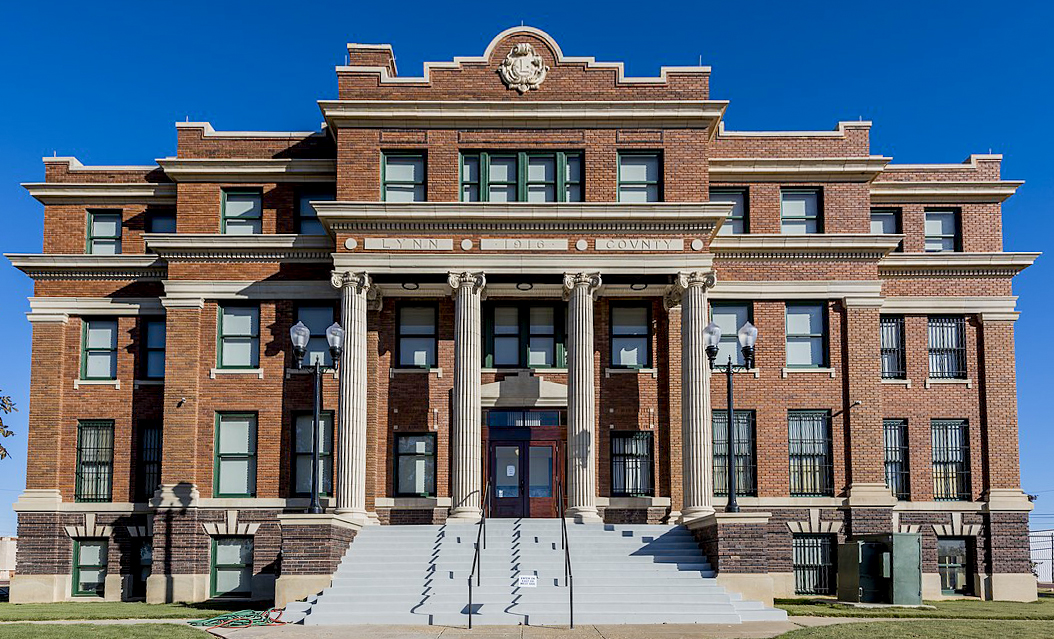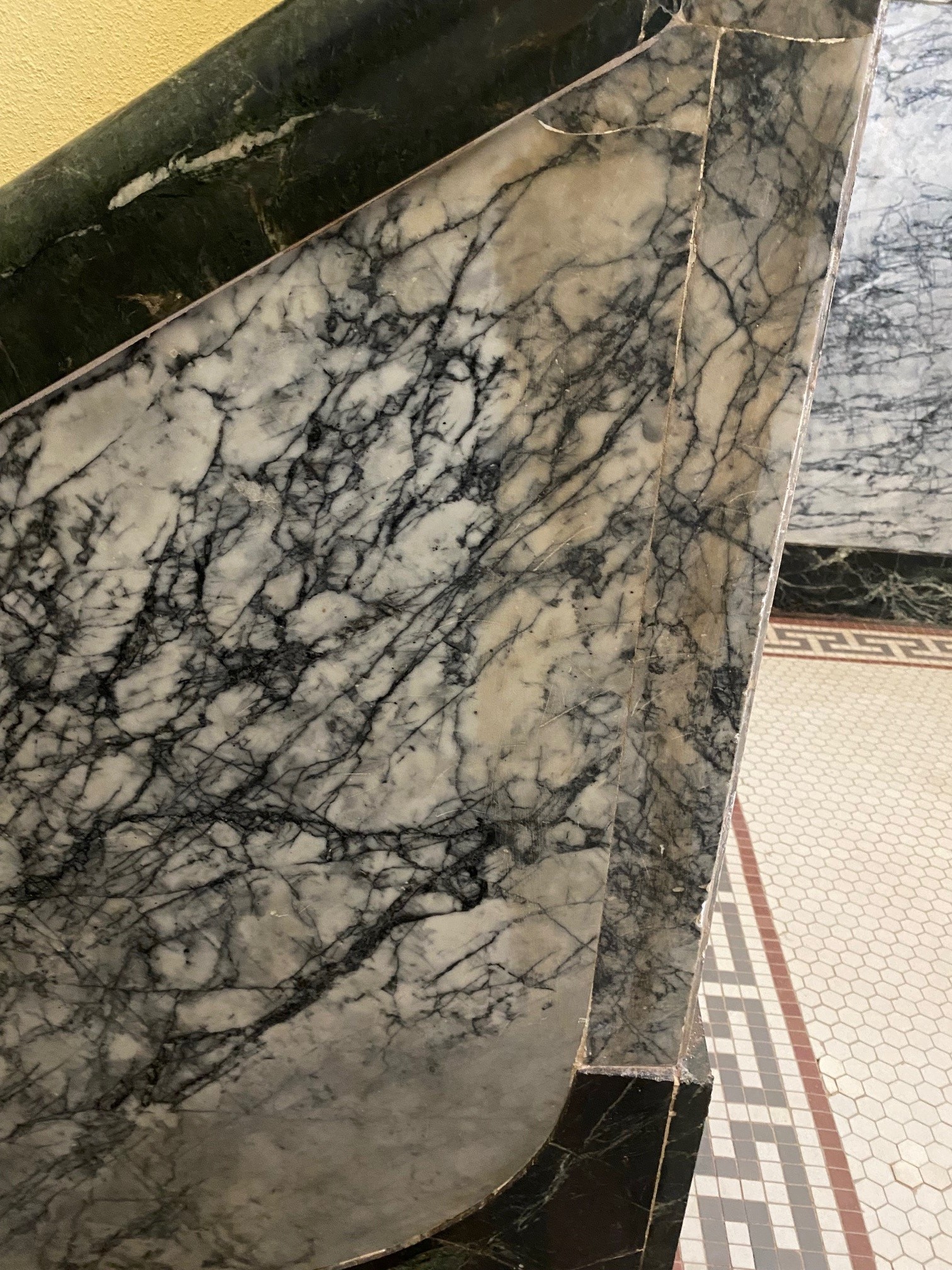County Seat: Tahoka
In 1876, the Texas Legislature created Lynn County, which organized in 1903 with Tahoka as the county seat. A two-story, frame structure served as the courthouse until citizens approved a bond election for the current building in July of 1915.
Designed by William M. Rice and built by A.Z. Rogers, the three-story building with a full basement housed courtrooms, office space, and the county jail. Completed in December 1916, the reinforced concrete building with red brick and cast stone veneer exhibits a Classical Revival Style in symmetrical facades repeated on opposite sides and porticos with ionic columns.
Komatsu Architecture was retained by Lynn County in 2009 to provide all construction documents for a full restoration and rehabilitation endeavor; J.C. Stoddard Construction served as contractor. After a short delay, construction began in early 2017; the $8.2 million project was completed in early 2020.
Fully returned to its former glory, this courthouse saw the restoration of all major spaces including a full and complete resurrection of the district courtroom, in particular. Also included were full restoration of all windows, doors, the HVAC system, and the plumbing and electrical systems. The building now stands as a beautiful example of restoration efforts overseen by the designers, contractors, and the Texas Historical Commission.
The county chose to keep one historical reminder in the form of blood stains on a marble wall! On March 8, 1936, sheriff’s deputy F.E. Redwine was moving prisoner Elmo Banks out of his cell in the top floor of the building. Banks managed to overpower the deputy and fatally shoot him with the deputy’s own pistol. Banks took off on foot triggering a massive, two-day manhunt. He was located some 15 miles southwest of Tahoka, arrested, tried, and sent to the electric chair. Redwine’s bloodstain is still visible today, 87 years later, on the wall by the top of a staircase.
Komatsu Architecture provided information for this article.











